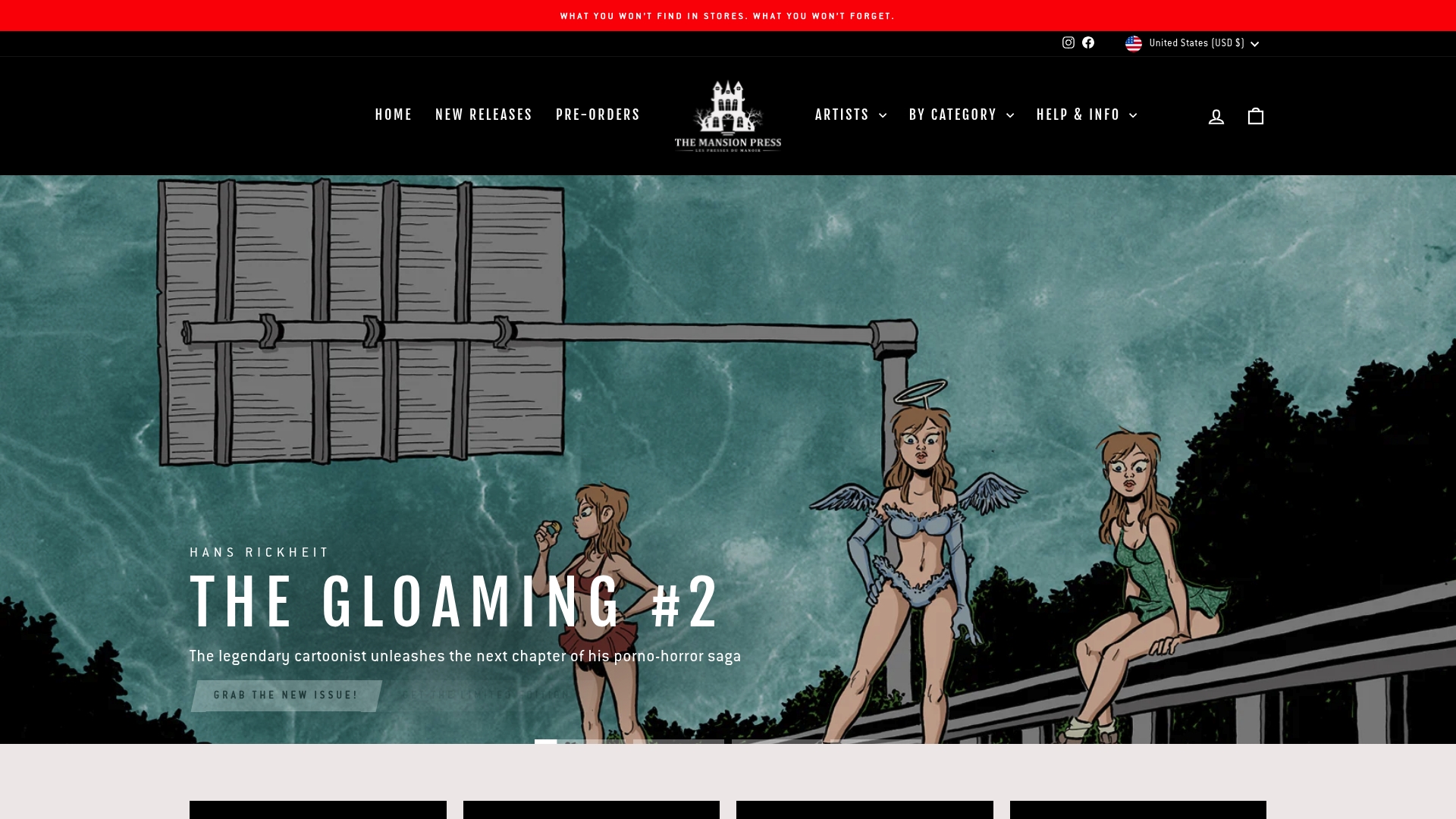Complete Guide to Interpreting Abstract Graphic Novels
Most graphic novels follow familiar stories and recognizable figures, yet a growing movement upends these expectations entirely. Abstract graphic novels trade linear plots for bold visual experimentation, inviting readers to find meaning in color, shape, and rhythm instead of words and characters. This approach transforms the reading experience, urging deeper engagement and creative interpretation. If you are curious about genres that stretch the boundaries of visual storytelling, this guide reveals how abstract graphic novels build complex narratives through pure visual language.
Table of Contents
- Defining Abstract Graphic Novels And Core Concepts
- Recognizing Styles And Artistic Approaches
- Visual Language And Narrative Construction
- Decoding Symbolism And Artist Intent
- Common Missteps When Interpreting Abstract Works
- Collecting, Displaying, And Valuing Abstract Comics
Key Takeaways
| Point | Details |
|---|---|
| Abstract Graphic Novels Redefine Storytelling | These works prioritize visual language over linear plot progression, inviting readers to engage with complex emotional and conceptual experiences through visual art. |
| Diverse Artistic Techniques | Techniques such as geometric abstraction and color field methods challenge traditional visual categories, creating unique narrative expressions. |
| Visual Language as Narrative | Abstract graphic novels construct meaning through spatial relationships, color psychology, and fragmented sequences, encouraging readers to interpret beyond literal representation. |
| Nuanced Interpretation Required | Successful engagement with abstract works involves an open-minded approach that embraces ambiguity and recognizes multiple interpretations, avoiding oversimplified reading strategies. |
Defining Abstract Graphic Novels and Core Concepts
Abstract graphic novels represent a radical departure from traditional narrative storytelling, transforming visual communication into an experimental art form that challenges readers’ perceptions. According to Abstract Comics, these unique works combine visual abstraction with comic strip continuity, creating narratives that transcend conventional representational techniques.
At their core, abstract graphic novels break down traditional storytelling frameworks by prioritizing visual language over linear plot progression. Artists in this genre deliberately deconstruct expected narrative structures, using non-representational imagery, unconventional panel layouts, and symbolic visual sequences to communicate complex emotional and conceptual experiences. Instead of relying on recognizable characters or chronological storytelling, these works invite readers to engage with visual art as a form of narrative communication.
The fundamental characteristics of abstract graphic novels include:
- Rejection of literal representational imagery
- Emphasis on visual rhythm and emotional resonance
- Disruption of traditional panel sequencing
- Exploration of visual metaphors and symbolic language
- Prioritization of aesthetic experience over literal interpretation
While traditional graphic novels tell stories through recognizable characters and plot arcs, abstract graphic novels challenge these conventions by treating visual elements as primary narrative tools. As The Comics Grid notes in scholarly research, these works transform comic art into a sophisticated medium for exploring complex ideas beyond traditional storytelling boundaries. For readers interested in deeper exploration of graphic novel genres, check out our comprehensive guide on graphic novel genres.
Recognizing Styles and Artistic Approaches
Abstract graphic novel styles represent a complex landscape of visual expression that challenges traditional artistic categorizations. Research from arXiv suggests that understanding artistic styles requires deep analytical approaches, particularly when exploring non-conventional visual narratives.
Artistic approaches in abstract graphic novels typically manifest through several distinctive techniques:
- Geometric Abstraction: Utilizing geometric shapes to convey emotional landscapes
- Color Field Techniques: Using expansive color regions as narrative elements
- Deconstuctive Visualization: Breaking down visual representations into fundamental components
- Symbolic Representation: Replacing literal imagery with metaphorical visual language
- Rhythmic Sequencing: Creating narrative flow through visual patterns rather than traditional storytelling
Machine learning research provides fascinating insights into style recognition. arXiv explores advanced techniques for identifying unique artistic approaches, demonstrating how technological analysis can decode complex visual languages. These computational methods reveal that abstract graphic novels are not random, but structured around intricate visual grammar and intentional stylistic choices.
For artists and enthusiasts seeking deeper understanding of artistic styles, our guide on identifying comic art styles offers comprehensive insights into the nuanced world of graphic novel aesthetics. Each style represents a unique visual dialect, communicating complex narratives through innovative artistic strategies that challenge traditional storytelling conventions.

Visual Language and Narrative Construction
Visual language in abstract graphic novels represents a revolutionary approach to storytelling that transcends traditional narrative frameworks. According to Will Eisner’s seminal work on Comics and Sequential Art, sequential art creates meaning through the intricate relationship between visual elements, challenging readers to interpret narrative beyond literal representation.
Abstract graphic novels deploy unique strategies for narrative construction:
- Spatial Metaphors: Using spatial relationships to convey emotional states
- Color Psychology: Employing color palettes as narrative emotional markers
- Fragmented Sequencing: Breaking linear narrative into conceptual fragments
- Gestural Abstraction: Transforming human movements into symbolic representations
- Temporal Displacement: Disrupting traditional time-based storytelling
Springer’s art historical perspective reveals that visual language in abstract graphic novels operates as a complex communication system, where each visual element serves multiple interpretative functions. The narrative emerges not through direct storytelling, but through the readers’ active engagement with visual complexity and symbolic interpretation.
For those interested in exploring these intricate narrative techniques further, our guide on understanding visual narrative provides deeper insights into the sophisticated world of graphic storytelling. Each abstract graphic novel becomes a unique visual dialect, inviting readers to decode meaning through an immersive, non-linear reading experience.
Decoding Symbolism and Artist Intent
Symbolism in abstract graphic novels operates as a complex language of visual metaphors, challenging traditional interpretative frameworks. Advanced research from arXiv demonstrates that machine learning techniques can now quantify and analyze visual concepts, providing unprecedented insights into the intricate symbolic landscapes created by artists.
Key strategies for decoding symbolic representations include:
- Contextual Analysis: Examining visual elements within broader artistic context
- Emotional Mapping: Tracking emotional resonance of symbolic elements
- Structural Deconstruction: Breaking down visual components to understand underlying meanings
- Cultural Referencing: Identifying potential cultural and historical symbolic references
- Comparative Interpretation: Comparing symbolic choices across different works
Research on creative styles reveals that artists develop unique symbolic languages that transcend literal representation. These personal visual vocabularies emerge through deliberate choices in composition, color, and spatial relationships, creating intricate narrative experiences that invite multiple interpretations.
For those seeking deeper understanding of these complex visual languages, our guide on understanding surrealism in graphic novels offers a comprehensive exploration of symbolic interpretation. Each abstract graphic novel becomes a nuanced conversation between artist and reader, where meaning is not prescribed but dynamically negotiated through visual engagement.
Common Missteps When Interpreting Abstract Works
Interpretation errors in abstract graphic novels frequently emerge from oversimplified reading strategies that fail to acknowledge the medium’s complex visual language. Visual poetry research demonstrates that misunderstandings often arise when viewers attempt to decode abstract works through traditional linear narrative frameworks, neglecting the intricate relationship between visual elements and meaning.
Common interpretative missteps include:
- Literal Translation: Attempting to read abstract works as direct representational narratives
- Cultural Projection: Imposing predetermined cultural assumptions onto visual symbols
- Singular Meaning: Assuming only one definitive interpretation exists
- Textual Dominance: Prioritizing written text over visual composition
- Aesthetic Judgment: Evaluating abstract works through conventional artistic standards
The critical analysis of graphic novels like Habibi) reveals the dangers of superficial interpretation, particularly when cultural representations become simplified or misunderstood. Successful engagement requires a nuanced approach that embraces multiple potential meanings and recognizes the artist’s intentional complexity.
For readers seeking to develop more sophisticated interpretative skills, our guide on understanding storytelling through abstract visuals offers comprehensive insights into navigating the challenging terrain of abstract graphic narratives. The key is cultivating a flexible, open-minded approach that celebrates ambiguity and multiple interpretative possibilities.

Collecting, Displaying, and Valuing Abstract Comics
Comic collecting requires a nuanced approach when dealing with abstract graphic novels, where artistic value transcends traditional market metrics. Research on graphic novels emphasizes that these works are more than mere collectibles - they represent self-contained artistic expressions with significant cultural and aesthetic significance.
Key considerations for abstract comic collectors include:
- Artistic Provenance: Documenting the artist’s creative history
- Preservation Techniques: Protecting delicate and unique works
- Contextual Valuation: Understanding the broader artistic movement
- Limited Edition Significance: Recognizing the value of rare printings
- Archival Documentation: Maintaining comprehensive collection records
Library research on graphic novel categorization reveals that valuing abstract comics requires looking beyond conventional market indicators. These works demand a sophisticated approach that considers artistic innovation, conceptual complexity, and the artist’s unique visual language.
For collectors seeking to build a comprehensive and meaningful collection, our guide on collecting rare comics offers expert insights into navigating the intricate world of abstract graphic novel acquisition. The most valuable collections are those that represent not just individual works, but entire artistic conversations and evolutionary moments in visual storytelling.
Unlock the Rich World of Abstract Graphic Novels with Exclusive Collectibles
Interpreting abstract graphic novels requires an open mind to symbolism, visual language, and artistic intent. If you find yourself fascinated by these complex narratives and want to own pieces that embody this rich creativity, you are not alone. Many readers struggle with decoding the layered storytelling that breaks traditional rules and demands active engagement. This challenge can become rewarding when paired with authentic, limited edition works from visionary artists.

Explore our curated selection of artbooks, comics, and collector’s editions at The Mansion Press where abstract graphic novels come to life beyond the page. Discover unique artworks that deepen your connection to visual storytelling. Visit our shop today to find exclusive pieces that invite interpretation and spark inspiration. Don’t wait to enrich your collection with thoughtfully crafted creations that redefine narrative art.
Frequently Asked Questions
What are abstract graphic novels?
Abstract graphic novels are a genre that prioritizes visual language over traditional storytelling. They use non-representational imagery and unconventional layouts to convey complex emotions and ideas, inviting readers to engage with visual art as a form of narrative communication.
How do I interpret visual language in abstract graphic novels?
Interpreting visual language in abstract graphic novels involves examining the relationship between visual elements and meaning. Readers should look for spatial metaphors, color psychology, and emotional resonance while remaining open to multiple interpretations rather than seeking linear narratives.
What are common mistakes when interpreting abstract graphic novels?
Common mistakes include trying to read them as straightforward narratives, imposing cultural assumptions, assuming singular meanings, and prioritizing text over visual composition. Understanding these pitfalls can enhance interpretative skills and appreciation for the complexity of abstract art.
How can I develop my skills for interpreting abstract graphic novels?
To develop your interpretative skills, practice a flexible, open-minded approach that embraces ambiguity. Engage with multiple potential meanings, reference broader artistic contexts, and explore guides to understanding storytelling through abstract visuals to enhance your analytical abilities.
Recommended
- Understanding Graphic Novel Formats: A Comprehensive Guide – The Mansion Press
- How Graphic Novels Influence Culture: Complete Guide – The Mansion Press
- Collector’s Guide for Graphic Novels: Complete Overview – The Mansion Press
- Graphic Novel Genres Explained: Complete Essential Guide – The Mansion Press

